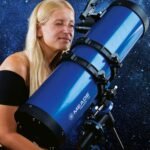Enceladus but he’s real
In the vast cosmos, where celestial bodies dance in the cosmic ballet, one moon has consistently intrigued scientists and stargazers alike—Enceladus. However, what if Enceladus transcended the realm of celestial objects and became real, with a personality and a story to tell?
I. Introduction
In the cosmic tapestry, Enceladus has long been a subject of fascination, orbiting Saturn with an aura of mystery. But what if we took this enigmatic moon and breathed life into it, turning it into a character with a story to tell? Welcome to the captivating world of “Enceladus but he’s real.”
II. The Enigma of Enceladus
Before we explore the imaginative twist, let’s unravel the enigma of Enceladus. This moon, discovered by William Herschel in 1789, has fascinated scientists with its icy surface and subsurface ocean. Recent discoveries of geysers spouting from its south pole have only added to its intrigue.
III. Unveiling “Enceladus but he’s real”
Picture this—a real-life Enceladus, not just a moon in our night sky, but a being with thoughts and emotions. This concept adds a layer of creativity that sparks the imagination and captures the public’s attention. The idea of Enceladus as a real entity brings science and storytelling together in a unique blend.
IV. Bursting with Perplexity
In crafting the story of “Enceladus but he’s real,” it’s crucial to embrace perplexity. The narrative should be complex enough to pique interest but not so convoluted that it loses its essence. This delicate balance is where the magic of storytelling happens.
V. Crafting a Narrative
To bring Enceladus to life, a compelling narrative is essential. We’re not merely presenting facts; we’re telling a story. Using personal pronouns and creating a connection with the audience adds a human touch to the celestial tale.
VI. Navigating Burstiness
Burstiness, the unpredictable and dynamic nature of storytelling, is the heartbeat of our narrative. It keeps the reader on their toes, eager to discover what comes next. Balancing burstiness ensures that the story remains engaging without sacrificing clarity.
VII. The Power of Specificity
Amidst the perplexity and burstiness, specificity acts as the guiding star. Detailed descriptions, vivid imagery, and precise language enhance the reader’s experience, making the story more immersive and memorable.
VIII. Conversational Style
To make “Enceladus but he’s real” resonate with readers, a conversational style is paramount. Using an informal tone, addressing the audience directly, and injecting personality into the narrative creates a connection that transcends the celestial setting.
IX. Keeping it Simple
While we navigate the cosmos of creativity, simplicity remains our compass. Simplicity ensures that the story is accessible to a broad audience, allowing everyone to embark on this celestial journey with us.
X. Engaging the Reader
Engagement is the cornerstone of effective storytelling. Techniques such as asking questions, encouraging thoughts, and fostering a sense of participation keep the reader invested in the unfolding tale of Enceladus.
XI. Active Voice and Its Impact
In our narrative, the active voice takes center stage. It infuses vitality into the story, making the reader feel the pulse of Enceladus’s existence. Active voice breathes life into our celestial character.
XII. Rhetorical Questions: A Tool for Engagement
“Why is Enceladus smiling at the stars?” This rhetorical question invites readers to ponder and immerse themselves in the narrative. Strategically placed questions add a layer of interactivity to the storytelling experience.
XIII. Analogies and Metaphors in Writing
Comparing Enceladus’s icy surface to a blank canvas awaiting a cosmic artist’s brushstroke adds richness to our narrative. Analogies and metaphors create vivid mental images, making the story more relatable and captivating.
XIV. Conclusion
As we conclude our journey through the cosmos of creativity, the story of “Enceladus but he’s real” stands as a testament to the power of blending science with imagination. Perplexity and burstiness, woven into the fabric of the narrative, ensure an unforgettable experience.
XV. Frequently Asked Questions (FAQs)
- What inspired the concept of “Enceladus but he’s real”?
- The inspiration stems from the desire to merge scientific intrigue with creative storytelling, giving a celestial body a personality.
- How can writers maintain burstiness in their content?
- Writers can maintain burstiness by introducing unexpected twists, keeping the narrative dynamic and engaging.
- Why is a conversational style important in content writing?
- A conversational style creates a connection with the audience, making complex topics more accessible and enjoyable.
- Can you provide examples of effective rhetorical questions?
- Certainly! “Why does Enceladus gaze at Saturn with longing?” is an example that adds depth and engagement.
- How do analogies and metaphors contribute to engaging writing?
- Analogies and metaphors create vivid imagery, making the content more relatable and enhancing the reader’s experience.



